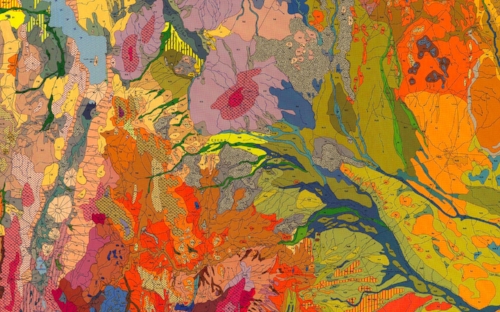by Justin Galle
Humans have been contributing to carbon emissions for far longer than just the modern industrial period, in which we emit greenhouse gases from the burning of fossil fuels. In fact, the leading contributor to anthropogenic climate change right up until the 1960s was soil cultivation, and the plowing, burning, and grazing of land associated with agriculture. Although the human impact on soil can increase greenhouse gases, through proper management we can also harness soil to reduce carbon emissions and adapt to the worst effects of climate change, including drought, desertification, and sea level rise.
Karl Thidemann, co-founder of Soil4Climate, recently spoke at a Boston Area Solar Energy Association meeting and laid out the case for the climate benefits of regenerative soil solutions.
Thidemann underlined that climate change was a "stock and flow" problem, in which both the total level and the rate at which we emit greenhouse gases present serious challenges. However, public policy responses like the Clean Power Plan only deal with the flow, from emissions sources, not the stock. To address the level of greenhouse gases in the atmosphere, the stock, which is wreaking havoc on climate systems already, Thidemann argued that soil management is a necessary tool. It is one of the few actions we can take that could reverse, not just slow down, climate mechanisms.
Soil management techniques employed by Vermont farmers such as no-till farming, using compost to shade soil, and innovative grazing that more closely resembles the movements of wild herds, were all highlighted by Thidemann as potential solutions ready for widespread application and experimentation globally. There was a recognition at the meeting that while farmers already have an incentive to employ proper soil management techniques (saving money, boosting yields), there should be added economic incentives that recognize farmers’ contributions to carbon storage.
In addition to farmland, forest management and arboreal soils will also have a significant role. Recent research has indicated that the Alaskan tundra is freezing at much slower rates than previously observed and that greenhouse gas emissions from carbon are surging as a result. While soil 40 years ago used to take only one month to freeze over, today it takes three months. As decomposing matter in soil is exposed for longer periods of time without freezing, emissions have risen as much as 70% from Alaska's soils between 1975 and 2015. Soil management techniques, properly applied, could be the difference between forest lands and previously frozen tundra serving as a carbon sink or a major carbon source.
The United Nations Framework Convention on Climate Change noted that 39% of the carbon stored by forests is actually due to their soil and that sustainable management can greatly reduce carbon stocks in the atmosphere. The Food and Agriculture Organization further noted, shockingly, that one third of the planet’s soils are already degraded and contributing to enormous releases of greenhouse gases. With international organizations sounding the alarm on both the threats and positive potential of soils, it is clear we should make soil management a central component of our climate change strategy.
One bright spot amidst these worrying trends is that soil management does not only reduce carbon emissions, it could also increase crop yields. An article in the journal Science calculated that a one ton increase in the carbon pool of degraded soil could increase yields of wheat and corn by 20 and 40 kilograms per hectare, each. That is a huge gain in productivity, showing how soil management could increase food security at the same time that it offsets carbon emissions from fossil fuels by as much as 15%. That’s a win-win for all of society. It’s time that we recognize the potential for soil management and start employing state of the art practices for managing the stock and flow of carbon through soil.
Justin Galle is an intern for eesi. You can reach him at justin_galle@hks18.harvard.edu


